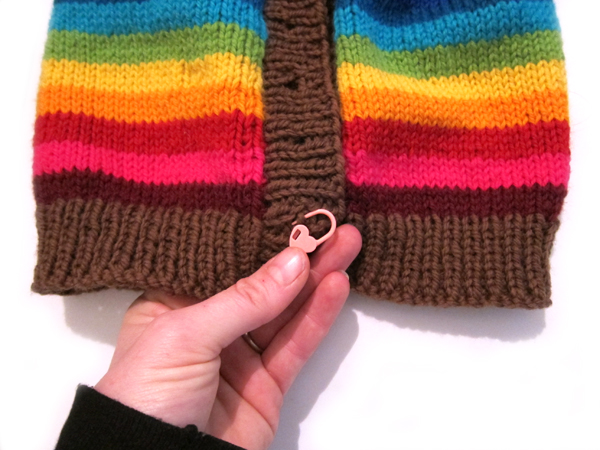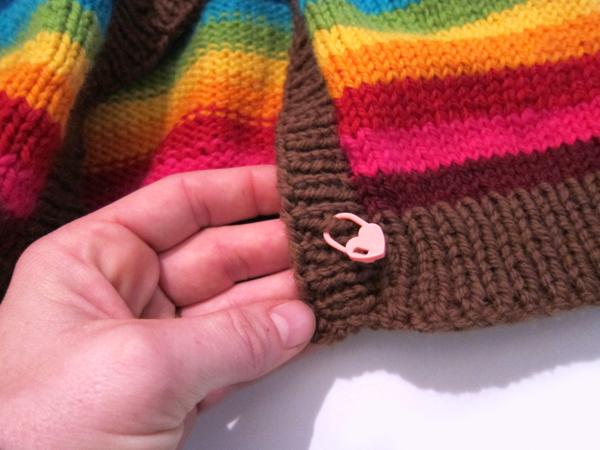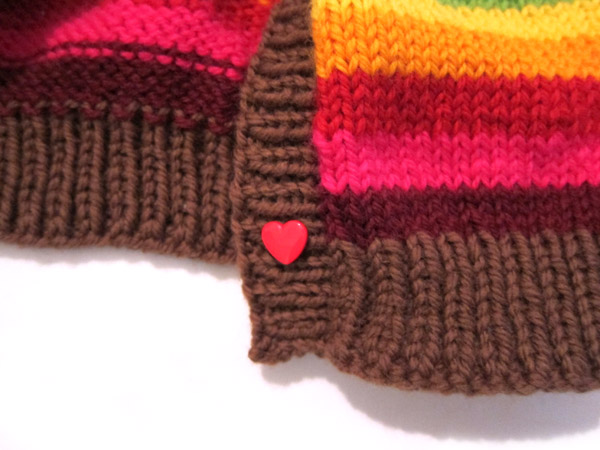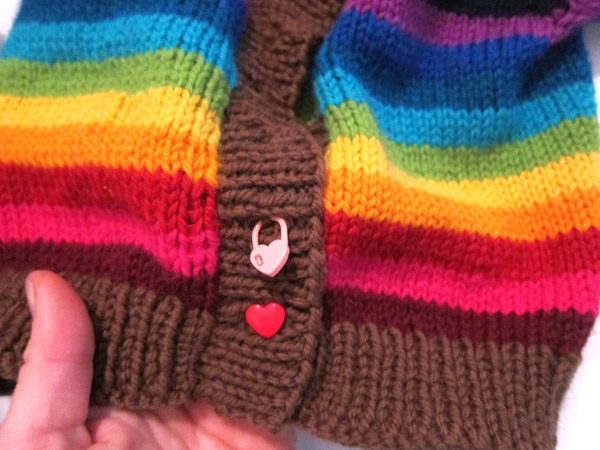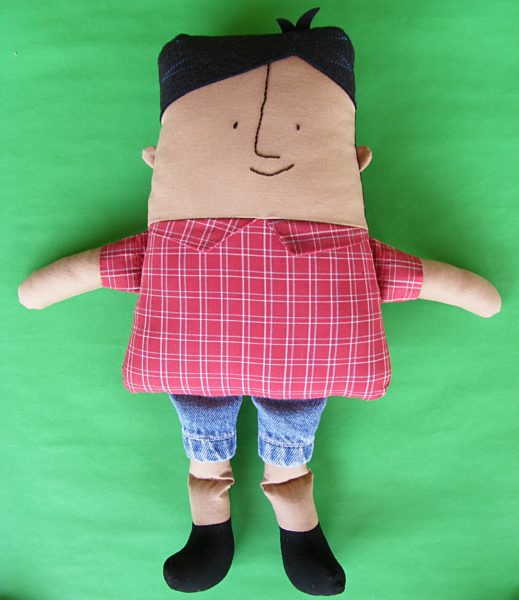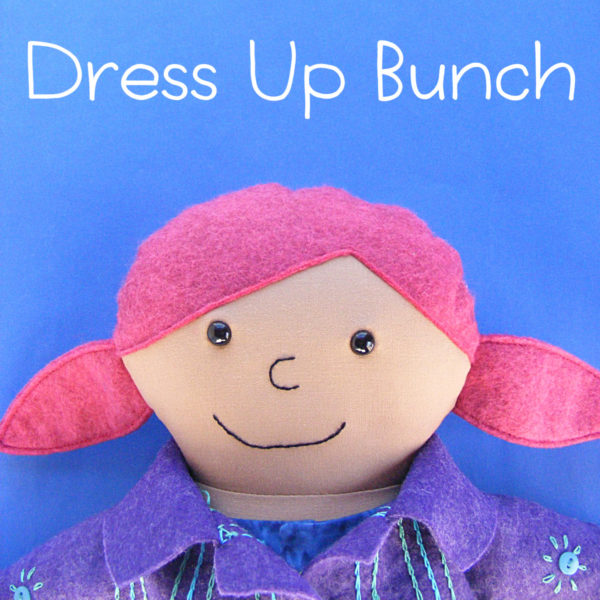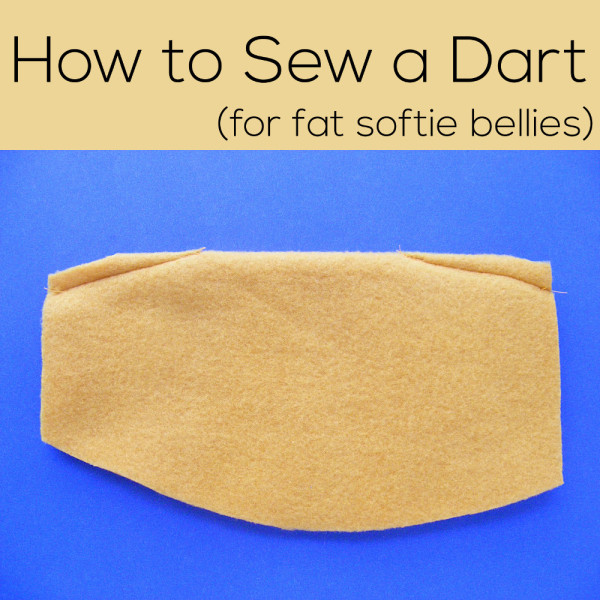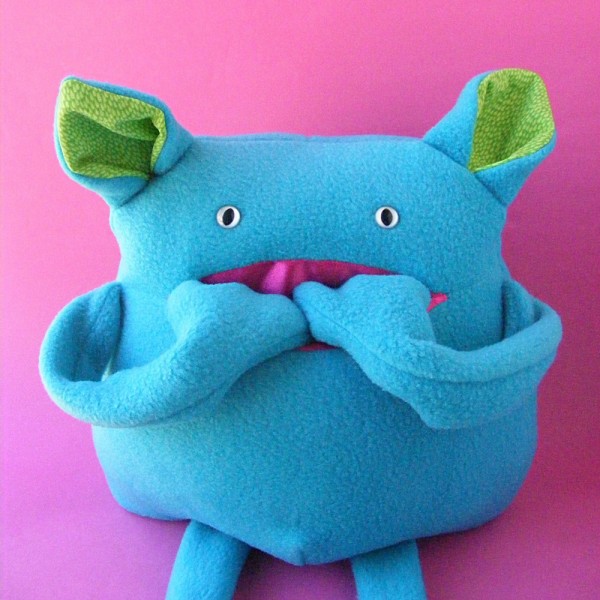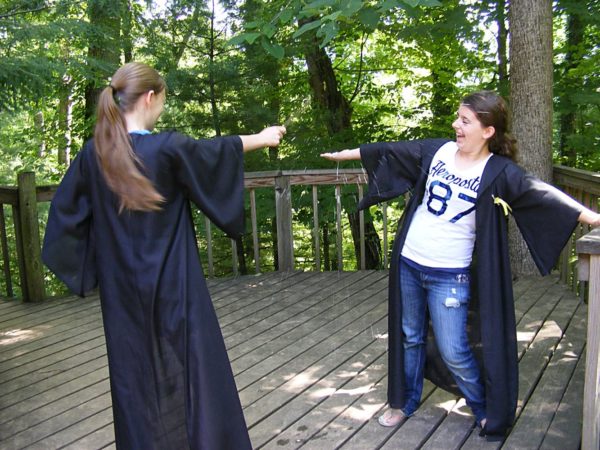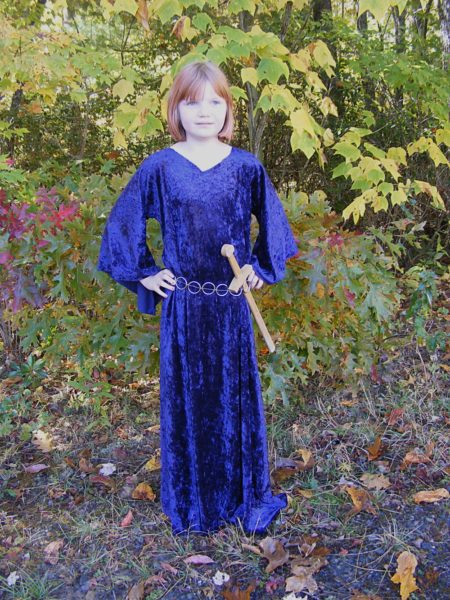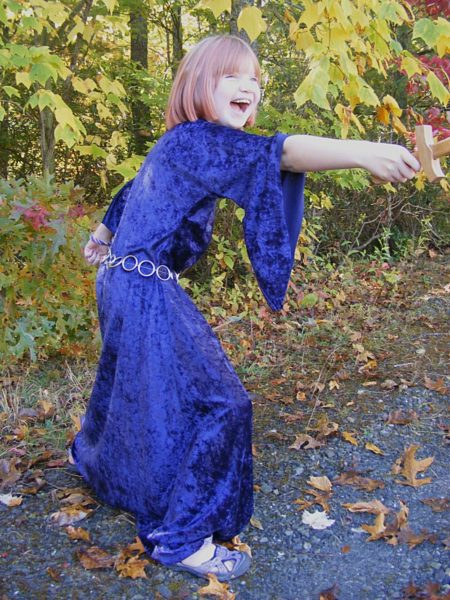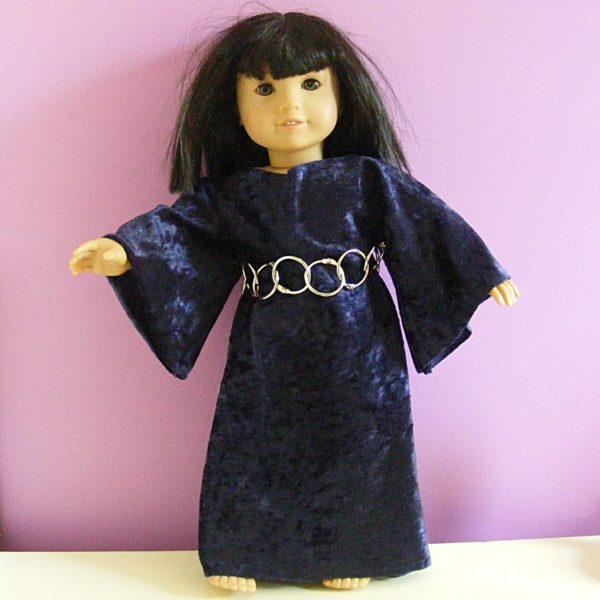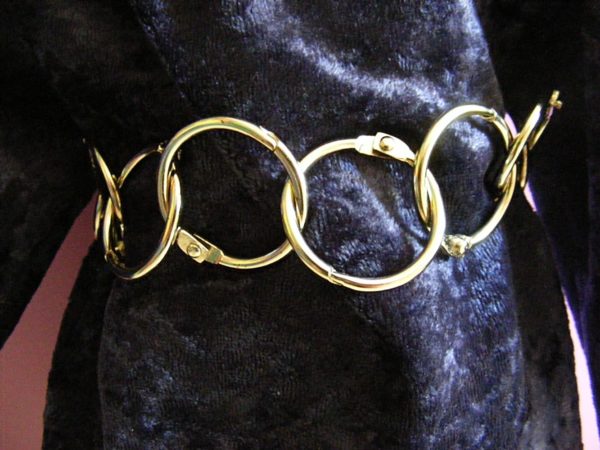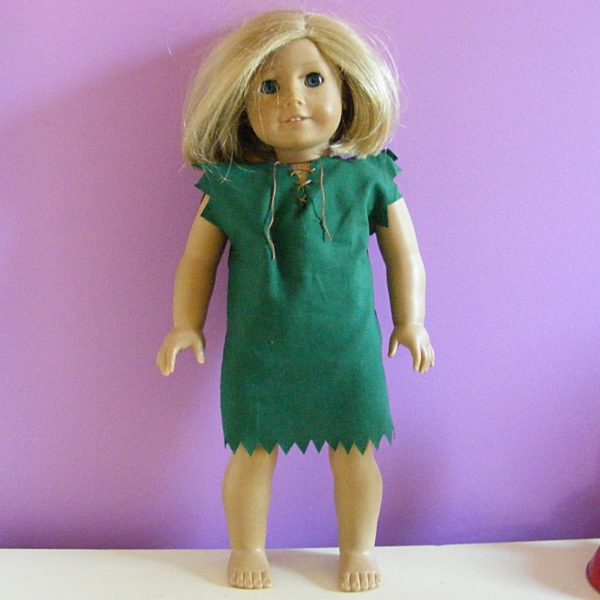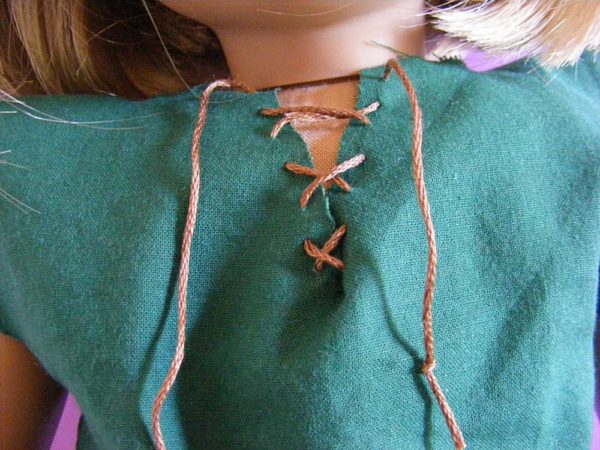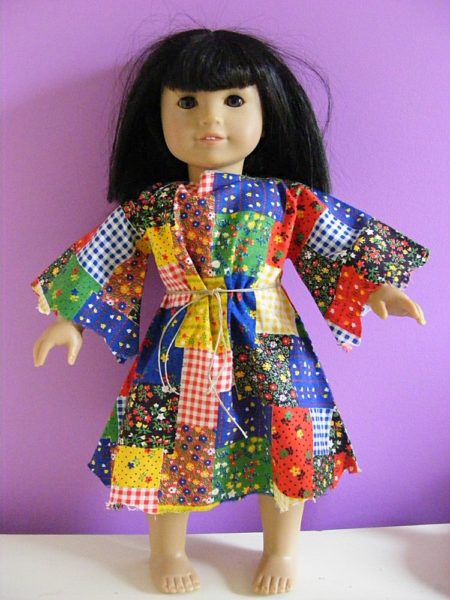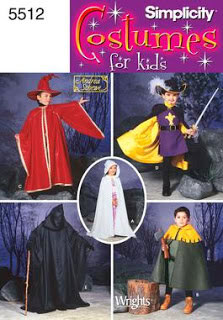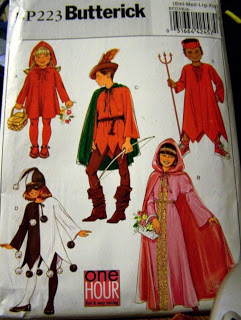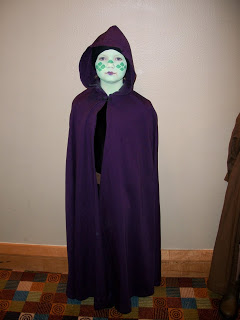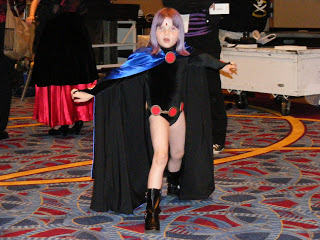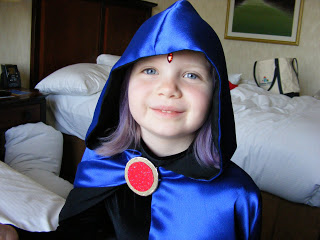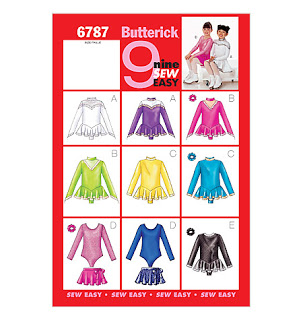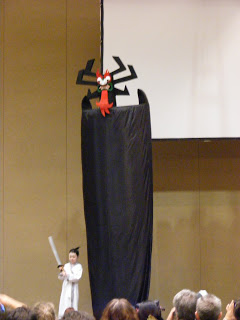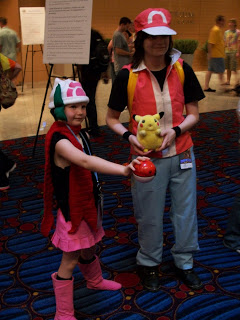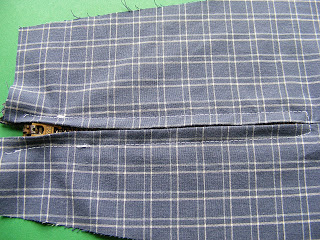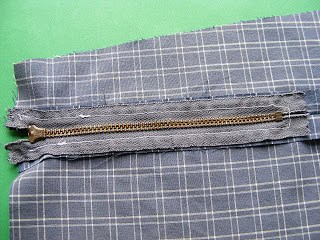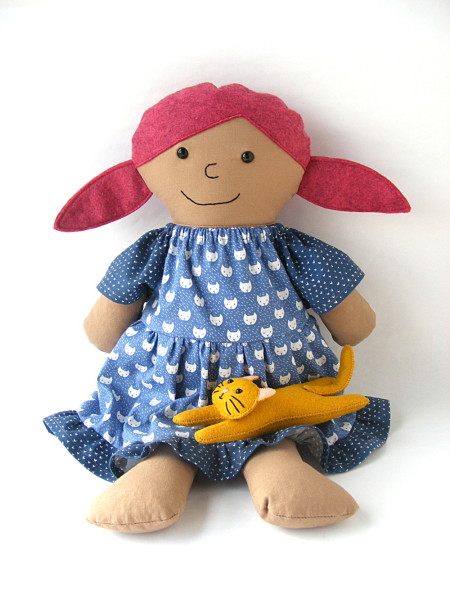Today I thought I’d share some of my favorite commercial patterns with you all. I drafted the pattern for Jo’s Sally dress – but only because I couldn’t find a commercial pattern with the right silhouette. If there’s an already-made pattern available for use – I use it! Especially for kids patterns because they’re generally easier to fit.
A lot of you wanted to know about Jo’s Hogwarts cloak. That’s Simplicity #5512 with just a few modifications.
The Hogwarts cloaks have sleeves, so I used view C (the red robe) and made the sleeve openings less huge. I added on the hood from view A (the white robe) and lined the whole thing with Gryffindor satin. Adding a lining is really easy and adds so much!
Jo is a big fan of cloaks. My favorite non-sleeved cloak pattern is Butterick BP223.
This pattern is actually no longer available, but I’m sure you can find something similar from other companies, or use the pattern number to search for a copy of it on Etsy, or Amazon.
I used that pattern as is for the cloak in Jo’s Jedi costume here. . .
. . . and I lined it for Jo’s Raven costume here.
I love hoods on cloaks – so dramatic!
For the bodysuit part of the Raven costume I used Butterick 6787.
I love this kind of basic pattern, with lots of possible variations built right in: skirt attached or separate, sleeve hems straight or pointed, collar or scoop neck, plain body or fancy piecing. This one shows nine possible combinations, but of course there are more possibilities than that with a little additional mixing and matching of the basic pieces.
I don’t have any good photos of things I’ve made, but McCall’s 4103 is another great basic pattern. Scrubs costumes and martial arts uniforms are both good basic silhouettes that can be used for lots of things – and this pattern includes both! The pants are easy elastic waist pants that could be used for ANY costume – make them up in silver fabric for a knight, in burlap for a scarecrow. . . you get the idea. Lengthen the martial arts top, use a contrasting color for the neck band – and you have a Samurai Jack costume.
That’s a teeny-tiny Jo as Samurai Jack next to her Dad as Aku, from Dragon*Con two years ago.
Finally – shoes. Boot covers are great – but sometimes you just want to make shoes from scratch. Butterick 5233 is a great pattern – though it runs WAY SMALL so check your measurements!
Jo used a modified version of the tall moccasins to make the boots for her Pokemon Trainer costume last year.
It was REALLY important to her that her boots be the exact same color as her skirt – and the symbol on her hat. She crocheted that scarf too!
So that’s it – some of my favorite commercial patterns for kids costuming. I make fewer costumes for big people. 🙂
Do you all have any favorites you want to share? Tell us in the comments! And tell us even if they’re out of print – old patterns are REALLY easy to find online – especially if you can give us the pattern # to search by.
Happy sewing!
Best,
Wendi
